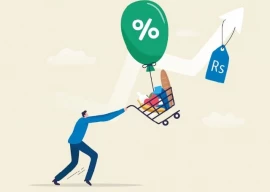
Metal prices have also fallen due to concerns regarding global demand, especially the slowdown in commodity-intensive investment and manufacturing activity in China, but also because of increases in supply as production has come on-stream reflecting the past investment boom.
Several factors are said to have likely contributed to this outlook, including inter alia the sharp drop in equity prices and the depreciation of the Chinese currency (renminbi), with the associated concerns about the extent of the growth slowdown in China and weaker commodity prices. As a consequence, emerging economy currencies have depreciated across the board, with particularly strong depreciation pressures in commodity exporter countries (Russia) and countries under stress (Brazil).
In many net commodity importer countries, lower commodity prices have alleviated inflation pressure and reduced external vulnerabilities. The trade-off between supporting demand and reducing vulnerabilities has become less pronounced as a result. Policy space, though, has declined as a number of central banks have already reduced interest rates over the past year. In some commodity importer countries, the terms of trade and real income gains from lower oil prices have been used to increase public sector savings and strengthen fiscal positions.
Meanwhile, what have we done to protect our economy from the ongoing global economic upheavals and to also, at the same time, take full advantage of declining oil prices? We have done the very opposite of what most developing countries as well as the emerging markets have done and are doing. As opposed to the depreciation of their respective currencies by India (six per cent), Indonesia (15 per cent), Thailand (nine per cent), Turkey (30 per cent), China (four per cent) and Vietnam (three per cent), we are holding on to an exchange rate which according to various estimates is overvalued by at least 20 per cent.
When you hold the dollar exchange rate cheaper by about 20 per cent in rupee terms, you simply cannot stop the dollar becoming a very good source of investment, especially for those looking for some easy and safer way to whiten their ill-gotten black billions without having to bother about paying any tax, even the withholding tax which one needs to pay when one invests this loot in any other business.
Also, an artificially held cheaper dollar encourages unnecessary imports. In fact, an artificially appreciated currency ends up subsidising imports and serves as an effective disincentive against foreign direct investment. A cheaper dollar also encourages one to obtain costly foreign debt.
There are three major reasons why governments in Pakistan feel reluctant to let the Pakistani rupee be traded at its realistic value. The first one concerns loans obtained in foreign currency. Any appreciable depreciation in the exchange value of the rupee would mean a pro-rata increase in the volume of the loan in terms of rupees. The second reason concerns the import bill which goes up every time the rupee tumbles. And the third one relates to what is called national pride. All these three reasons lack any kind of economic logic or justification. The first two make it impossible to be realistic while negotiating a foreign loan or when formulating trade policies. The third one ends up ultimately causing a lot of national humiliation.
Pakistan is a market of around 200 million people. And it is largely an import dependent country. There is a possibility, maybe a remote one at the moment, that just because many exports are subsidised by Islamabad by keeping the rupee exchange rate at an artificially high level, those who export a lot of goods to Pakistan would perhaps find it more economical to set up fabrication plants for the same goods in the country if the subsidy component is removed from the exchange rate.
Published in The Express Tribune, September 9th, 2015.
Like Opinion & Editorial on Facebook, follow @ETOpEd on Twitter to receive all updates on all our daily pieces.


1731735822-0/Copy-of-Untitled-(1)1731735822-0-165x106.webp)














COMMENTS (3)
Comments are moderated and generally will be posted if they are on-topic and not abusive.
For more information, please see our Comments FAQ